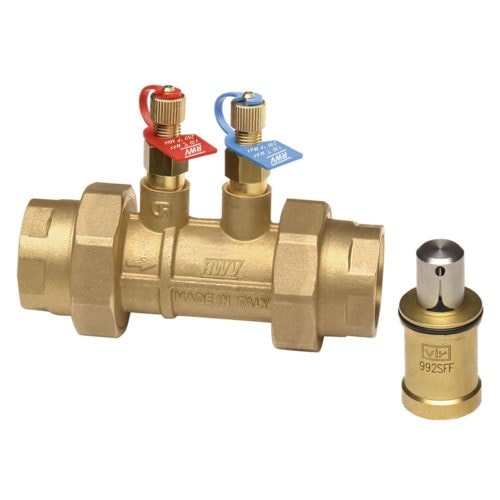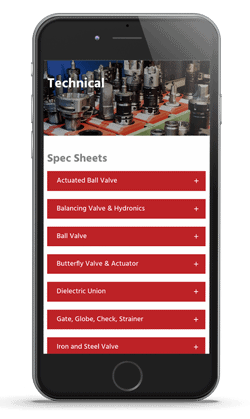Automatic vs. Manual Balancing Valves: Benefits of a Hydronic System
Comments Off on Automatic vs. Manual Balancing Valves: Benefits of a Hydronic SystemHydronic HVAC systems use water to heat and cool facilities evenly. One of the essential components that aid in the even spread of temperatures are balancing valves.
Balancing valves are throttling devices that help regulate the flow of water in hydronic components. Generally, there are two types of balancing valves, automatic and manual, each with benefits and drawbacks. This blog will compare automatic and manual balancing valves and go over applications and advantages for each.
Manual Balancing Valves
Manual balancing valves are pressure-dependent and do not adjust to changing system pressure. Instead, manual balancing valves are manually adjusted throttling valves, which provide the ability to gauge pressure drop across the valve. Pressure drop is measured, flow is calculated, and valve openings are adjusted by a test and balance evaluator who aids in achieving flow values in accordance with the design.
This manual operation will maintain a balanced system at full-load conditions (designed load), even though it only performs under those conditions around 2-3% of the time. However, as soon as the system dynamics slightly differ, the system becomes unbalanced and remains so until reevaluated and adjusted.
Advantages of Manual Balancing Valves:
- Sensitive: Manual balancing valves are capable of reading low rates of flow very accurately.
- Environmentally friendly: Manual balancing valves tend to use less energy than automatic valves, thereby using fewer non-renewable resources.
- Cost-effective: As manual balancing valves use less energy than automatic valves, they save money on energy bills.
- Intuitive: When there is a problem with a manual balancing valve, it is easier to troubleshoot than with an automatic valve.
Automatic Balancing Valves
Automatic balancing valves function independently of pressure to keep the water flow constant. They maintain the designed flow rate within the PSID range specified by the manufacturer, even as the system pressure varies. Accordingly, they provide system stability as they maintain an overall system balance, even when other branches fluctuate, thereby achieving full flow authority.
Automatic balancing valves act as pressure differential regulators at most varying load conditions by controlling system pressure changes in the valve itself, which makes them more user-friendly.
Advantages of Automatic Balancing Valves:
- Ease of use: Automatic balancing valves adjust themselves and, therefore, do not require any balancing expertise or expense.
- Efficient: Automatic balancing valves eliminate overpumping at the part load, thereby reducing pumping costs. They also maintain water flow, which ensures boiler efficiency.
- Durable and quiet: They reduce water noise and erosion, leading to a longer-lasting system.
- Time-saving: Valves balance automatically; therefore, no system rebalance is required when terminal units are reconfigured within the system.
Applications of Manual Balancing Valves vs. Automatic Balancing Valves
Both manual balancing valves and automatic balancing valves are useful in a myriad of applications, which depend on the system requirements.
Manual Balancing Valve Applications:
- HVAC systems: Manual valves are excellent in facilities where areas regularly experience low rates of flow.
- Power generation systems: Manual balancing valves work especially well with variable speed pump control systems.
- Domestic hot water recirculation lines: Manual balancing valves can control water flow through a plumbing system efficiently.
Automatic Balancing Valve Applications:
- HVAC systems: Automatic balancing valves work especially well where a balanced flow is needed throughout a facility.
- Fan coil units: Automatic balancing valves are better at regulating fan coil units evenly.
Solutions from RED-WHITE VALVE CORP.
While manual balancing systems may be seen as old-fashioned, they are still the preferred system, depending on the application. The initial cost differences between manual and automatic balancing valves are minimal, so it all comes down to what you need the balancing valve in your system to do.
At RED-WHITE VALVE CORP., we believe as a company that it is truly about listening to what our customers are saying and delivering on our promises. To do this, we have added and continue to add new product lines and work tirelessly to satisfy customers with world-class service while offering competitive pricing. Contact us for more information on our products.

